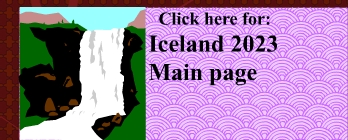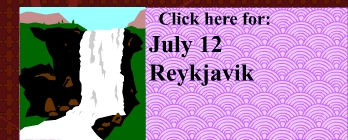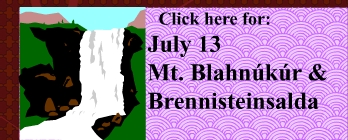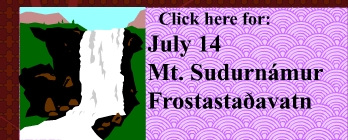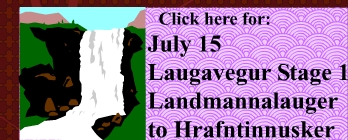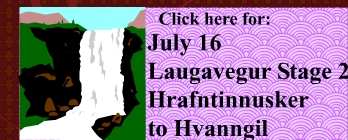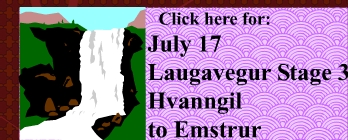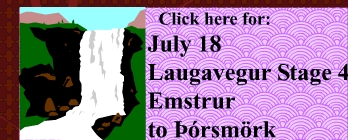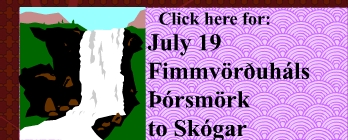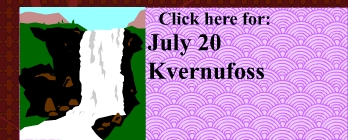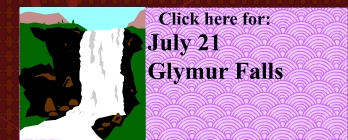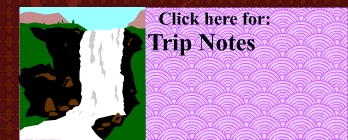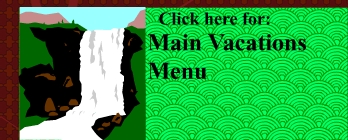

We started the morning with a guided tour of the Raufarhólshellir lava tube. This cave was formed 5200 years ago in the Leitahraun eruption. The tour took us 400 m into the cave, though the mapped cave extends 1360 meters, making it the longest lava tube in Europe. The interior has been fitted with steel walkways, so there is little danger of tripping over rocks. Although we all wore helmets, the diameter of the cave was so big that there was little danger of bumping our heads.
The interior of Raufarhólshellir was cold. We saw ice stalagmites standing on the floor of the cave - water slowly dripping from the ceiling had frozen, and gradually built up
a pinnacle of ice. The guide showed us a couple of "volcano straws" - for some reason, the volcanic rock can create a hollow tube that looks much like a drinking straw, they grow off of the ceiling. Apparently there
used to be plenty of these straws in the Raufarhólshellir cave, but people snapped them off as souvenirs before entrance to the lava tube was controlled.
After our one hour cave tour, we drove to Fagradalsfjall, hoping to get a glimpse of the latest volcanic eruption in Iceland. By total coincidence, we met Anthony
and Anneka in the P1 Parking lot, and so enjoyed their company during the long hike out to the Litli-Hrútur viewpoint. This map shows the hiking trails that existed to observe the 2021 and 2022 eruption sites. We followed the purplish trail 6 Km from the P1 parking lot to the viewpoint
for the 2022 eruption. The trail had been extended an additional 3.5 KM (not shown on the map) this year to allow hikers a chance to view the new 2023 eruption from the slopes of the Litli-Hrútur hill.

Litli-Hrútur is Icelandic for Little Aries. Why does the hill have that name? No idea.
When we got close to the eruption, it smelled like a wildfire, which is a strange thing, since Iceland was mostly deforested by the early settlers a thousand years ago (though there are many ongoing efforts in Iceland to plant trees and regrow the forests). When we got nearer, we saw that what we had smelled was not a forest fire, but a moss fire! A slow burning line of smouldering flames had ignited a big patch of moss; there was a clear line of demarcation between the unburnt landscape and the blackened area.
We spent at least an hour watching the volcano. It is an amazing thing to see. I had previously been fortunate enough to see volcanic activity in Hawaii, but this eruption was much bigger, more dramatic, and so unworldly that I felt really lucky to see it. What a great way to spend our last full day in Iceland! It made a terrific vacation even more memorable.

































